Two Trailblazing Indian Women Artists Making Their Mark
Mayuri Chari and Janhavi Khemka produce distinctly different artworks. However, their creative expressions are driven by strong personal perspectives shaped by issues related to gender, disability, and family dynamics—and each artist is establishing a notable reputation.
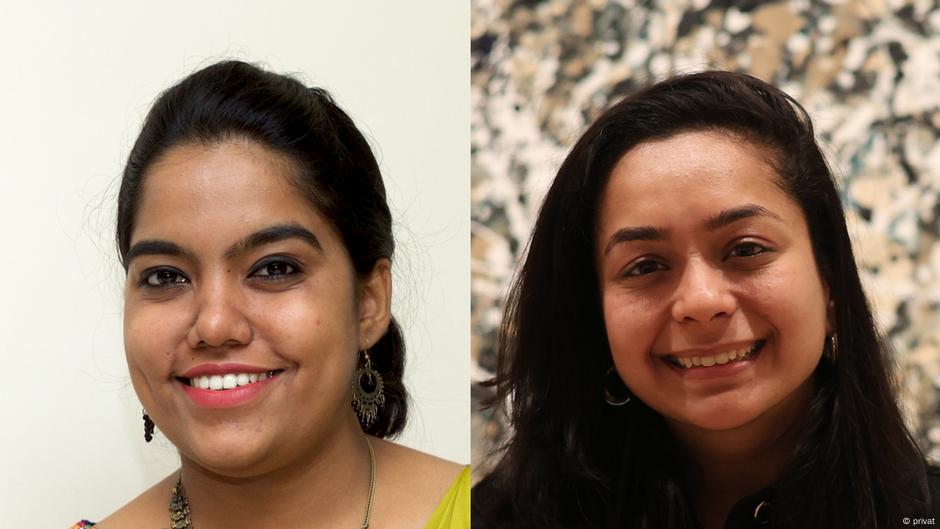
"Art Opens My World": Janhavi Khemka
Janhavi Khemka’s mother has consistently served as her artistic muse. Janhavi’s fondest recollections of engaging in art-making revolve around her mother: “Whenever I worked on my school projects, my mother assisted me by elucidating concepts using hand gestures, facial expressions, and physical movements.”
Khemka (as shown on the upper right), who was born in Varanasi In 1993, India in Mumbai, who is deaf, learned lip reading in Hindi from her mother during childhood and was also encouraged to explore art. However, her mother passed away when Khemka was 15 years old.
The influence she had on me assisted me in maneuvering through an able-bodied environment, which further fueled my artistic expression via light, touch, experimental sounds, and tactile media,” Khemka stated in a written interview with .

In this robust environment, Khemka is establishing herself as an interdisciplinary artist who works with a wide range of media, including woodcuts, paintings, performances, and animations. She obtained her Master of Fine Arts degree from the esteemed School of the Art Institute of Chicago and previously completed another MFA at Visva-Bharati University in Santiniketan, a renowned institution in West Bengal known for its strong ties to Indian cultural heritage and customs.
"Santiniketan opened a new world for me, as it was my first time being away from home. It helped me grow, understand how my disability shapes my identity. It was transformative, helping me expand my perspectives, connect with people and artists, and deepen my engagement with art."
Friends and mentors have backed Khemka's journey as an artist, yet she continues to encounter challenges. The lack of accessibility combined with being “constantly self-conscious” and frequently needing to articulate her experiences, which can be “draining.”
Khemka's artwork has been showcased in many solo and group shows. A significant portion of her pieces reflects her experience as someone who is hearing impaired and perceives sounds via vibrations. Among these creations, such as "Impress/ion" and "Your name, please?", some are designed for interaction, encouraging an immediate engagement between the artist and each viewer.
In 2021, she produced "Letter to My Mother," a shaking surface covered with projected animated lights forming wooden-cut print lips. This piece evokes memories of learning lip reading from her mother using a mat as a tool. She explains, “This artwork enables me to connect personally with my mom in a manner beyond mere verbal expression.” Viewers can feel sounds through touch and gain insight into an intensely private episode within the artist’s existence.
Khemka states that his biggest achievement is feeling at ease in life, where he can move about freely and with self-assurance.
"A woman isn’t made by birth but through creation": Mayuri Chari
A liberated and assured life: That is consistently what conceptual artist Mayuri Chari aspire to achieve for herself as a woman—and for all women around the world.
She likes to use the word "priorities" instead of "success." Her priorities shine through her art, concentrating on the female form and conveying messages that she wishes to share rather than those others might expect her to express.
Actually, they don't always appreciate the message her art conveys.
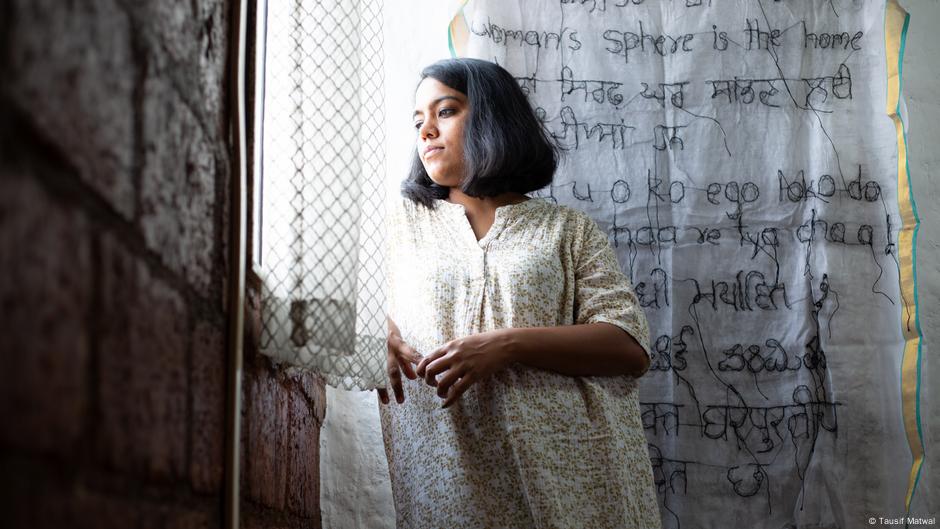
Regardless of whether it’s through print, fabric, film, or even cow dung, Chari explores and contests the perception, placement, and treatment of women through different levels of Indian society.
These are not stories or fables," she states regarding the messages in her art concerning women. "They depict reality.
During her Master of Fine Arts program at the University of Hyderabad, she began exploring the female form as an artistic theme. For a presentation at the end of one semester, she created sizable prints featuring her own body. While she viewed these works from an aesthetic perspective, appreciating their textures and hues, others—such as her fellow students and observers—took a markedly different view. They perceived her art as distasteful and advised against publicly displaying such pieces.
Her reaction merely fueled her contemplation further. During a telephone conversation from her residence in rural Maharashtra, she shared, "This prompted me to wonder: Why do individuals view the human form as obscene or erotic? Rather than appreciating it as an artistic expression."
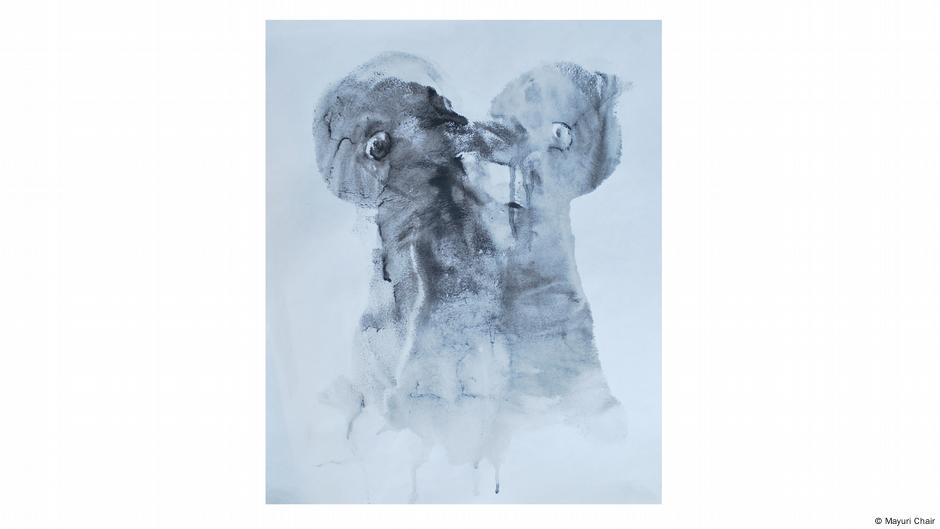
In Chari's creations, the female form embodies not divinity nor commodification but personal consciousness. Nevertheless, her artwork has sparked debate in India due to its portrayal of naked women—depicted realistically with their imperfections and assertiveness. As a result, Indian galleries have declined to showcase her pieces, and organizers of exhibitions have requested she take down some artworks.
Even though she faces institutional rejection, her work deeply connects with Indian women who recognize themselves and their experiences in her art. Chari mentions that women frequently approach her at exhibitions and quietly share, “I relate to this too. I go through the same things.”
In recent years, her work has attracted global recognition. She showcased her installation titled "I WAS NOT CREATED FOR PLEASURE" during the 12th Berlin Biennale in 2022 and will be participating as an artist-in-residence at the 2024 India Art Fair.
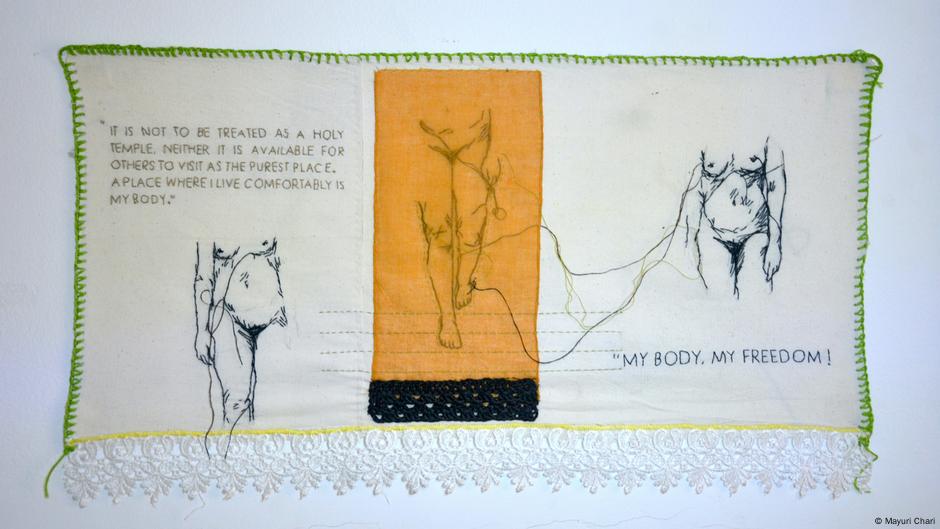
Similar to Janhavi Khemka, Chari’s journey as an artist was also shaped by her family—albeit not entirely for the better. She hails from India’s coastal state of Goa In 1991, young Chari frequently observed and assisted her father, who was a carpenter, as he crafted furniture and woodcarvings. At school, she began producing artwork herself, receiving encouragement from her instructors.
However, following her father’s death, Chari faced a ban imposed by her family—especially her senior uncle—who prohibited her from furthering her education at an advanced level. Despite this prohibition, she chose not to comply and pursued her studies secretly, eventually obtaining a Master's degree in Fine Arts through assistance from friends and various scholarship programs. In those initial years post-graduation, her future spouse and co-artist, Prabhakar Kamble, played a crucial role in offering essential backing and resources for her career development.
Although Chari's research focuses on how society places women, she believes that caste plays a more significant role than gender in shaping how her work has been received.
"Your entire situation hinges on your caste background. Since I was born into a lower caste, major art galleries tend to favor those from higher castes. These establishments pay attention to them and prefer individuals with strong English-speaking skills and substantial financial resources," she clarifies.
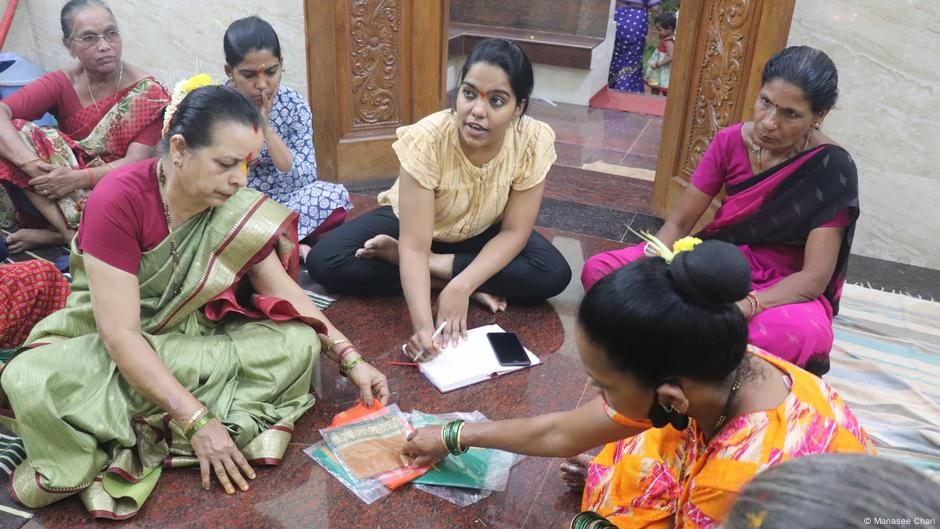
Guidance for budding young artists
Currently, Chari is involved in several initiatives. One of them is a brief documentary focusing on the experiences of women who work as sugarcane laborers in rural areas. Additionally, she has undertaken textile projects centered around trousseau-making—a traditional embroidery technique introduced to her native state of Goa by Portuguese settlers—which has been preserved over generations through mothers teaching their daughters. This skill was one that Chari acquired directly from her mother herself.
Janhavi Khemka’s mother will likewise remain prominent in her endeavors. She aspires to create a film in the future utilizing woodcut print animation to depict their bond. Based on her personal journey, she advises emerging artists to “approach failures bravely, maintain patience and hope, and be prepared to confront challenges directly.”
For her part, Chari encourages aspiring artists to maintain their independence as creative individuals. She states, "Young artists should not blindly follow others or replicate what other creators are doing; instead, they ought to develop their own original thinking."
Edited by: Brenda Haas
Author: Cristina Burack
Comments
Post a Comment